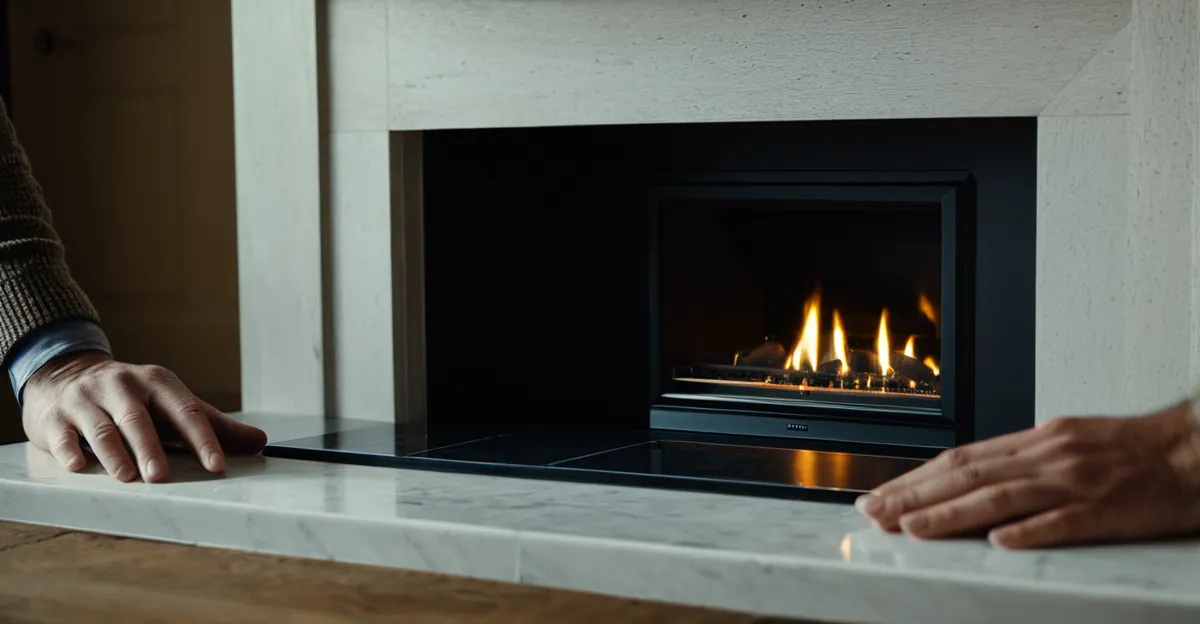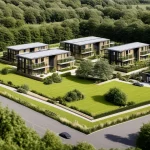UK Climate Challenges and Cozy Home Design
Combating dampness and cold in British homes
UK homes face distinct challenges due to the UK climate, characterized by damp, chilly conditions that can impact comfort and structural integrity. Damp-proofing is vital to prevent moisture ingress, which can lead to mold and damage. Ensuring thorough damp-proofing measures, such as effective damp-proof membranes and ventilation, is essential in maintaining a healthy living environment.
Additional reading : How Can Minimalist Decor Transform Your Home’s Atmosphere?
Proper insulation plays a pivotal role in combating cold weather while enhancing energy efficiency. High-quality insulation in walls, lofts, and floors reduces heat loss, helping homes stay warm without excessive energy consumption. Materials like mineral wool and rigid foam boards are common, but the choice depends on factors such as the building’s age and construction type.
Energy-efficient solutions, including double-glazed windows and draught-proofing around doors and windows, contribute to maintaining a stable internal temperature. These measures not only improve the energy efficiency of UK homes but also reduce energy bills. It is important to consider that integrating insulation and weatherproofing should be done thoughtfully to preserve traditional architecture while achieving warmth and comfort.
Topic to read : What Are the Top Tips for Designing a Functional Home Office in the UK?
By combining robust damp-proofing and advanced insulation with energy-efficient features, UK homeowners can create cozy interiors that withstand the often-moist climate, blending comfort with sustainability.
Navigating UK Building Regulations and Restrictions
Understanding UK building regulations is essential when planning home improvements. These regulations set minimum standards for construction work, ensuring safety, energy efficiency, and accessibility. When renovating or extending a property, homeowners must comply with these standards to avoid legal issues or costly delays. For example, regulations cover aspects such as structural integrity, fire safety, insulation levels, and ventilation.
Planning permission is another critical factor, especially for projects involving significant alterations, such as extensions or changes to the property’s external appearance. Whether planning permission is needed depends on various factors like the size and location of the work, and if the home is in a conservation area or subject to other restrictions. Typically, small-scale interior improvements may not require permission, but it is crucial to verify this with local authorities to ensure compliance.
For owners of period homes, such as Victorian or Georgian properties, adhering to legal requirements can be more complex. These homes often fall under heritage preservation regulations that restrict changes affecting their historic character. Renovations must therefore balance modern needs with the conservation of original features, sometimes requiring specialist consultations or listed building consent. This legal framework supports protecting architectural heritage while allowing sympathetic updates.
Navigating UK building regulations and obtaining necessary permissions requires careful planning and understanding of legal parameters. Engaging professionals familiar with local regulations and period home restrictions can ease this process, helping homeowners achieve their renovation goals without compromising on compliance.
Making the Most of Limited Space in Traditional UK Homes
Clever solutions for comfort in compact interiors
Small space design is a common challenge in UK terraces and Victorian homes, where layouts often include narrow rooms and limited storage options. These historic homes were not built with contemporary living needs in mind, making optimization essential for comfortable daily living.
Effective space-saving solutions start with smart storage integration. Built-in wardrobes, under-stair cupboards, and wall-mounted shelving maximize available areas without clutter. Choosing furniture that serves multiple functions—such as sofa beds or extendable dining tables—also helps create versatility in compact rooms.
Designing flexible, multifunctional spaces is key in traditional UK homes. For example, a dining area adjacent to the kitchen can double as a workspace, while a cozy living room corner can incorporate reading nooks or small office setups. Fold-away desks and stackable chairs further enhance adaptability without sacrificing coziness.
In optimizing interiors, light colour schemes and strategic lighting improve the perception of space, making small rooms feel larger and more inviting. Mirrors positioned opposite windows amplify natural light, which is especially valuable given the UK climate often features overcast, damp conditions.
Embracing these space-saving solutions and design strategies enables homeowners to fully utilize the unique layouts of UK terraces and Victorian homes, creating interiors that are both functional and inviting without extensive structural changes.
Sourcing Materials and Craftsmen for UK Homes
Accessing quality and authenticity in British home renovations
Incorporating local materials is essential to maintain the character and integrity of UK homes. Using regionally sourced stone, timber, or brick ensures that renovations blend seamlessly with the original structure. This practice supports sustainable sourcing by reducing transportation emissions and promotes materials suited to the UK climate and building traditions.
Finding skilled craftsmen with expertise in traditional techniques is critical when restoring or updating period properties. Experienced artisans can replicate original features such as intricate woodwork, stone masonry, or plasterwork, preserving the heritage while adding longevity. Employing British craftsmanship also guarantees attention to detail and adherence to high standards, which is often missing in generic replacements.
Homeowners benefit from engaging with regional suppliers who specialize in authentic materials and bespoke components, such as handmade tiles or reclaimed wood. Such partnerships not only enhance the uniqueness of a project but also sustain the local economy. Additionally, regional suppliers often provide tailored advice, helping select materials that meet both aesthetic and practical needs.
By prioritizing local materials, British craftsmanship, and sustainable sourcing through trusted regional suppliers, UK homeowners can achieve renovations that respect tradition while embracing modern standards of quality and environmental responsibility.
Balancing Period Features with Modern Comfort
Striking harmony in period property interiors
Preserving period property interiors demands a thoughtful approach to maintain Victorian features or characteristics typical of Georgian homes while introducing modern updates that enhance everyday comfort. Achieving this balance is essential not only to honor architectural heritage but also to meet contemporary living standards.
Key to successful integration is selecting modern amenities that complement original elements rather than overpower them. For example, installing discreet heating systems and energy-efficient lighting can improve functionality without detracting from ornate moldings or sash windows. Careful placement and styles that echo period design help maintain visual harmony.
Practical solutions often involve customizing furnishings or fixtures to mirror historical styles while incorporating modern technology. Upgrading kitchens or bathrooms in period homes may include traditional materials—such as subway tiles or timber cabinetry—combined with modern appliances and fittings. This approach respects the home’s character while ensuring usability.
Homeowners balancing heritage preservation with comfort might consider:
- Retaining original woodwork and enhancing it with gentle refinishing rather than replacement
- Using secondary glazing to improve insulation while preserving window integrity
- Incorporating smart home features that are unobtrusive and reversible
Several UK homes demonstrate this dual approach by preserving ornate fireplaces or cornices alongside underfloor heating or improved insulation. These examples illustrate that sympathetic renovation can offer warmth, convenience, and energy efficiency without compromising history.









